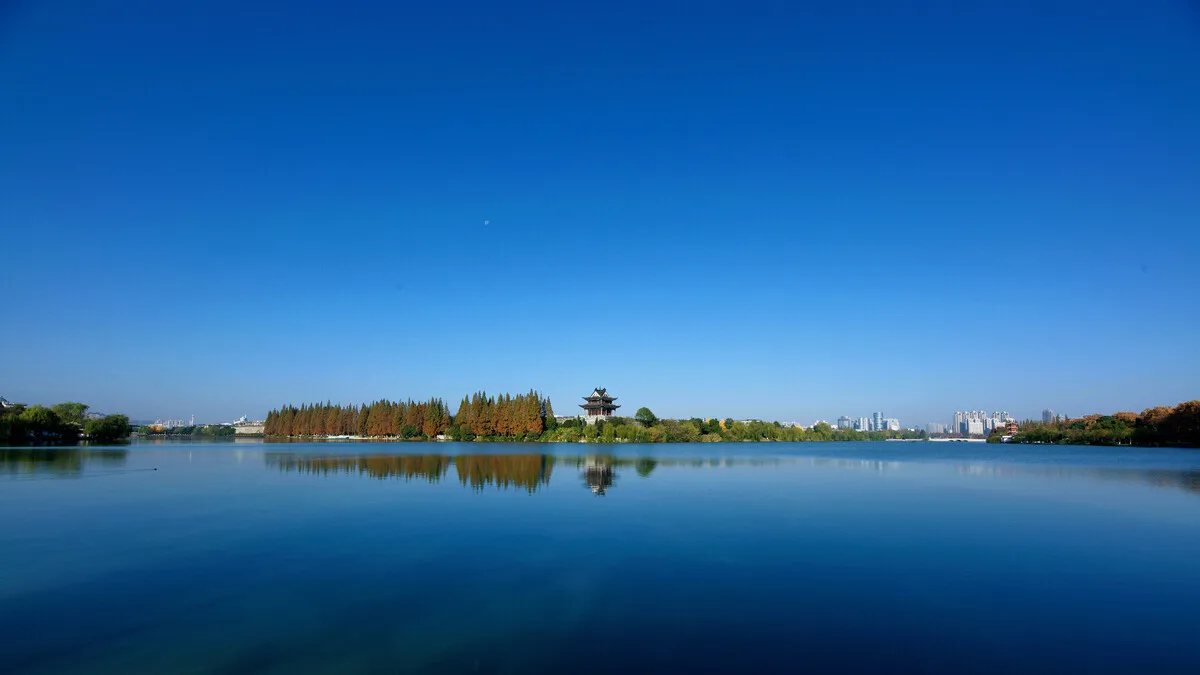The moat, also known as city ditch, serves as a protective waterway surrounding a city’s walls. In the case of Xiangyang City, it is enveloped by the Han River to the north, while artificial moats, collectively known as the Xiangyang City Moat (襄阳护城河), encircle the east, south, and west sides. Spanning a length of 5060 meters and with an average width of over 180 meters, reaching up to 250 meters at its widest point, the Xiangyang City Moat covers an area of 910,000 square meters, making it the widest extant city moat in Asia. It stands as a defining feature of Xiangyang’s fortifications, contributing to its reputation as one of the most formidable bastions in Chinese history, earning the city the moniker of the “Foremost Fortress in China” alongside its renowned city walls.
Throughout history, Xiangyang’s military significance has been paramount. Described in historical texts as strategically crucial, Xiangyang was often deemed more important than Wuhan to the southeast and Jingzhou in the Hubei Province. The city’s location made it a coveted prize in military campaigns, with over 200 recorded battles and skirmishes fought within its confines. This rich history of conflict underscores the city’s enduring importance in China’s military history and its status as a symbol of resilience and strength.
Table of Contents
- Basic Information
- Location and Transportation
- History of Xiangyang City Moat
- Other Attractions in Xiangyang Ancient City
Basic Information
| Estimated Length of Tour | 1 – 2 hours |
| Ticket Price | Free |
| Opening Hours | 24 hours a day throughout the year |
Location and Transportation
The Xiangyang City Moat is situated outside the ancient city walls of Xiangyang City, within Xiangyang District, Xiangyang City, Hubei Province, China. It runs adjacent to the south of the Han River. To get there, you can take bus 1, 5, 13, 14, 78, 536, 539, or K15 and get off at Nanhu Square stop (南湖广场站).
History of Xiangyang City Moat
In the era of ancient warfare, the significance of the Xiangyang City Moat was irreplaceable. In tandem with the construction of city walls, digging moats formed a dual military defense system, effectively warding off any potential invaders. The exact date of the initial excavation of the Xiangyang City Moat is not documented but is believed to coincide with the founding of Xiangyang City. Over time, the moat underwent continuous expansion, deepening, lengthening, maintenance, and refinement.
During the Southern Song Dynasty, when the city endured a six-year siege by the forces of the Yuan Dynasty, the Xiangyang City Moat played a pivotal role in the city’s defense. Expanded significantly compared to earlier times, its broad expanse effectively thwarted the advances of the Yuan forces, preventing them from approaching Xiangyang City.
In the transition from the Yuan to the Ming Dynasty, Xiangyang was guarded by the renowned general Deng Yu, who oversaw the expansion of the city and the further development of the moat, solidifying its essential form.
However, in the aftermath of 1949, the defensive significance of the Xiangyang City Moat gradually diminished. In 1976, the section of the moat north of Dongmen Bridge, along with the land bordering the Han River, was transformed into Xiangyang Park. Later, in 1986, the section of the moat south of Dongmen Bridge was repurposed into Yangchunmen Park.
In 1992, Xiangyang Fishing Grounds, Xiangyang Park, and Yangchunmen Park were amalgamated into Xiangyang Ring Park, which continues to exist today. It has evolved into five distinct scenic areas: Changchun, Wenhui, Xianqiu, Anhe, and Linhan. Additionally, three bridges now span the moat at the entrances and exits of Xiangyang City: Dongmen, Nanmen, and Ximen bridges.
The Xiangyang City Moat comprises an artificial waterway encircling Xiangyang City. In practice, it ingeniously addresses the challenges of water inflow, drainage, and maintaining a dynamic balance of water volume, earning praise for its ingenious design and demonstrating the wisdom of its creators. Today, with the city walls standing alongside the moat, it has become a unique and picturesque landmark, proudly standing as the foremost among China’s seven ancient city walls. For centuries, it has stood witness to soldiers resisting external threats and steadfastly guarding the ancient city of Xiangyang.







